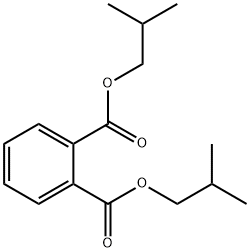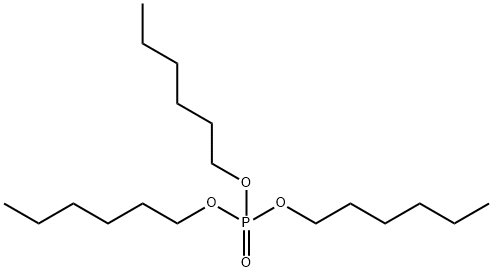Dibutyl phosphate
Synonym(s):Phosphoric acid dibutyl ester
- CAS NO.:107-66-4
- Empirical Formula: C8H19O4P
- Molecular Weight: 210.21
- MDL number: MFCD00015245
- EINECS: 203-509-8
- SAFETY DATA SHEET (SDS)
- Update Date: 2024-10-29 18:21:28

What is Dibutyl phosphate?
Description
Dibutyl phosphate is a pale amber to brown,odorless liquid. Molecular weight = 210.24; Specificgravity (H2O:1) = 1.06; Boiling point = (decomposes)135-138℃; Freezing/Melting point = 213℃; Vapor pressure-1 mmHg at 20℃; Flash point = 188℃ (oc);Autoignition temperature = 420℃. Hazard Identification(based on NFPA-704 M Rating System): Health 3,Flammability 2, Reactivity 0. Practically insoluble in water.
Chemical properties
Dibutyl phosphate is a pale amber to brown, odorless liquid. It is used as a catalyst for cross-linking in the paint industry and antistatics for the textile industry. It is stable in neutral, acidic or alkaline solution, and is classified as "not readily biodegradable" but inhererently biodegradable.The half-life time of 4.99 years is estimated for the degradation of dibutyl phosphate in air by the reaction with photochemically produced OH radicals. (MITI, Japan).
The Uses of Dibutyl phosphate
Dibutyl phosphate is used as a plasticizer for polymer system and hydraulic fluid directly and used as a catalyst for cross-linking in paint industry. It is used as an antifoam agent in ore separation process and as an antistatic agent in the textile industry. It can be used as a precursor for antistatics, as a mould release agent in polyurethane applications and, as a non volatile acidic catalyst soluble in organic media.
The Uses of Dibutyl phosphate
Pale amber liquid
Definition
ChEBI: Dibutyl phosphate is a dialkyl phosphate.
General Description
Pale-amber odorless liquid. Mp: -13°C, bp: 135-138°C. Density: 1.06 g cm-3. Moderately soluble in water (18 g / L at 20°C).
Reactivity Profile
Dibutyl phosphate Is non-flammable, but combustible (flash point 188°C). Auto-ignition temperature is 420°C. Emits irritating or toxic fumes in a fire. Is a moderately strong acid obtained by the partial esterification of phosphoric acid. Reacts exothermically and vigorously with bases. Incompatible with strong oxidizing agents, alkali metals, heat, or plastic. Reacts with many metals liberating flammable/explosive hydrogen gas.
Health Hazard
Dibutyl phosphate is an irritant of the eyes and mucous membranes.
Flammability and Explosibility
Non flammable
Safety Profile
Moderately toxic by ingestion. When heated to decomposition it emits toxic fumes of POx. See also PHOSPHATES.
Potential Exposure
This material is used as a catalyst in organic synthesis.
First aid
If this chemical gets into the eyes, remove anycontact lenses at once and irrigate immediately for at least15 min, occasionally lifting upper and lower lids. Seek medical attention immediately. If this chemical contacts theDibutyl phosphate 901skin, remove contaminated clothing and wash immediatelywith soap and water. Seek medical attention immediately. Ifthis chemical has been inhaled, remove from exposure,begin rescue breathing (using universal precautions, including resuscitation mask) if breathing has stopped and CPR ifheart action has stopped. Transfer promptly to a medicalfacility. When this chemical has been swallowed, get medical attention. If victim is conscious, administer water ormilk. Do not induce vomiting.
storage
Color Code—White: Corrosive or Contact Hazard;Store separately in a corrosion-resistant location. Prior toworking with this chemical you should be trained on its properhandling and storage. Dibutyl phosphate must be stored toavoid contact with strong oxidizers, such as chlorine, chlorinedioxide, and bromine, since violent reactions occur.
Shipping
UN1760 Corrosive liquids, n.o.s., Hazard class: 8; Labels: 8-Corrosive material, Technical Name Required. UN3261 Corrosive solid, acidic, organic, n.o.s., Hazard class: 8; Labels: 8-Corrosive material, Technical Name Required.
Incompatibilities
Dibutyl phosphate is a medium strong acid. Incompatible with oxidizers (chlorates, nitrates, per- oxides, permanganates, perchlorates, chlorine, bromine, fluorine, etc.); contact may cause fires or explosions. Keep away from alkaline materials, strong bases, strong acids, oxoacids, and epoxides. Attacks many metals forming flammable and explosive hydrogen gas. Attacks some plas- tics, rubber, and coatings.
Properties of Dibutyl phosphate
| Melting point: | -13 °C |
| Boiling point: | 250 °C |
| Density | 1.06 g/mL at 20 °C (lit.) |
| vapor pressure | 0Pa at 20℃ |
| refractive index | n |
| Flash point: | 188 °C |
| storage temp. | Store below +30°C. |
| solubility | Chloroform (Soluble), Methanol (Slightly) |
| pka | 1.53±0.50(Predicted) |
| form | Liquid |
| color | Clear |
| Specific Gravity | 1.1 |
| Water Solubility | insoluble |
| BRN | 607224 |
| Exposure limits | ACGIH: TWA 5 mg/m3 (Skin) OSHA: TWA 1 ppm(5 mg/m3) NIOSH: IDLH 30 ppm; TWA 1 ppm(5 mg/m3); STEL 2 ppm(10 mg/m3) |
| CAS DataBase Reference | 107-66-4(CAS DataBase Reference) |
| EPA Substance Registry System | Dibutyl phosphate (107-66-4) |
Safety information for Dibutyl phosphate
| Signal word | Danger |
| Pictogram(s) |
 Corrosion Corrosives GHS05  Health Hazard GHS08 |
| GHS Hazard Statements |
H314:Skin corrosion/irritation H351:Carcinogenicity |
| Precautionary Statement Codes |
P201:Obtain special instructions before use. P202:Do not handle until all safety precautions have been read and understood. P280:Wear protective gloves/protective clothing/eye protection/face protection. P303+P361+P353:IF ON SKIN (or hair): Remove/Take off Immediately all contaminated clothing. Rinse SKIN with water/shower. P305+P351+P338:IF IN EYES: Rinse cautiously with water for several minutes. Remove contact lenses, if present and easy to do. Continuerinsing. |
Computed Descriptors for Dibutyl phosphate
| InChIKey | JYFHYPJRHGVZDY-UHFFFAOYSA-N |
Abamectin manufacturer
LANXESS India Pvt. Ltd.
New Products
4-AMINO-TETRAHYDRO-PYRAN-4-CARBOXYLIC ACID HCL 4-(Dimethylamino)tetrahydro-2H-pyran-4-carbonitrile 4-Aminotetrahydropyran-4-carbonitrile Hydrochloride (R)-3-Aminobutanenitrile Hydrochloride 3-((Dimethylamino)methyl)-5-methylhexan-2-one oxalate 1,4-Dioxa-8-azaspiro[4.5]decane 5-Bromo-2-nitropyridine Nimesulide BP Aceclofenac IP/BP/EP Diclofenac Sodium IP/BP/EP/USP Mefenamic Acid IP/BP/EP/USP Ornidazole IP Diclofenac Potassium THOMAIND PAPER PH 2.0 TO 4.5 1 BOX BUFFER CAPSULE PH 9.2 - 10 CAP SODIUM CHLORIDE 0.1N CVS ALLOXAN MONOHYDRATE 98% PLATINUM 0.5% ON 3 MM ALUMINA PELLETS (TYPE 73) LITHIUM AAS SOLUTION 2-Bromo-1-(bromomethyl)-3-chloro-5-nitrobenzene 2-Bromo-3-nitroaniline N-(3-Hydroxypropyl)-N-methylacetamide 3-Bromo-6-chloropyridazine 4-ethyl-3-nitrobenzoic acidRelated products of tetrahydrofuran








You may like
-
 Dibutyl Phosphate (Mono- and Di- Ester mixture) CAS 107-66-4View Details
Dibutyl Phosphate (Mono- and Di- Ester mixture) CAS 107-66-4View Details
107-66-4 -
 Dibutyl Phosphate CAS 107-66-4View Details
Dibutyl Phosphate CAS 107-66-4View Details
107-66-4 -
 Dibutyl phosphate, ≥97% CAS 107-66-4View Details
Dibutyl phosphate, ≥97% CAS 107-66-4View Details
107-66-4 -
 Dibutyl phosphate 95% CAS 107-66-4View Details
Dibutyl phosphate 95% CAS 107-66-4View Details
107-66-4 -
 Dibutyl phosphate CAS 107-66-4View Details
Dibutyl phosphate CAS 107-66-4View Details
107-66-4 -
 107-66-4 Dibutyl phosphate 98%View Details
107-66-4 Dibutyl phosphate 98%View Details
107-66-4 -
 Di-n-butyl phosphate CAS 107-66-4View Details
Di-n-butyl phosphate CAS 107-66-4View Details
107-66-4 -
 Lithium ClavulanateView Details
Lithium ClavulanateView Details
61177-44-4